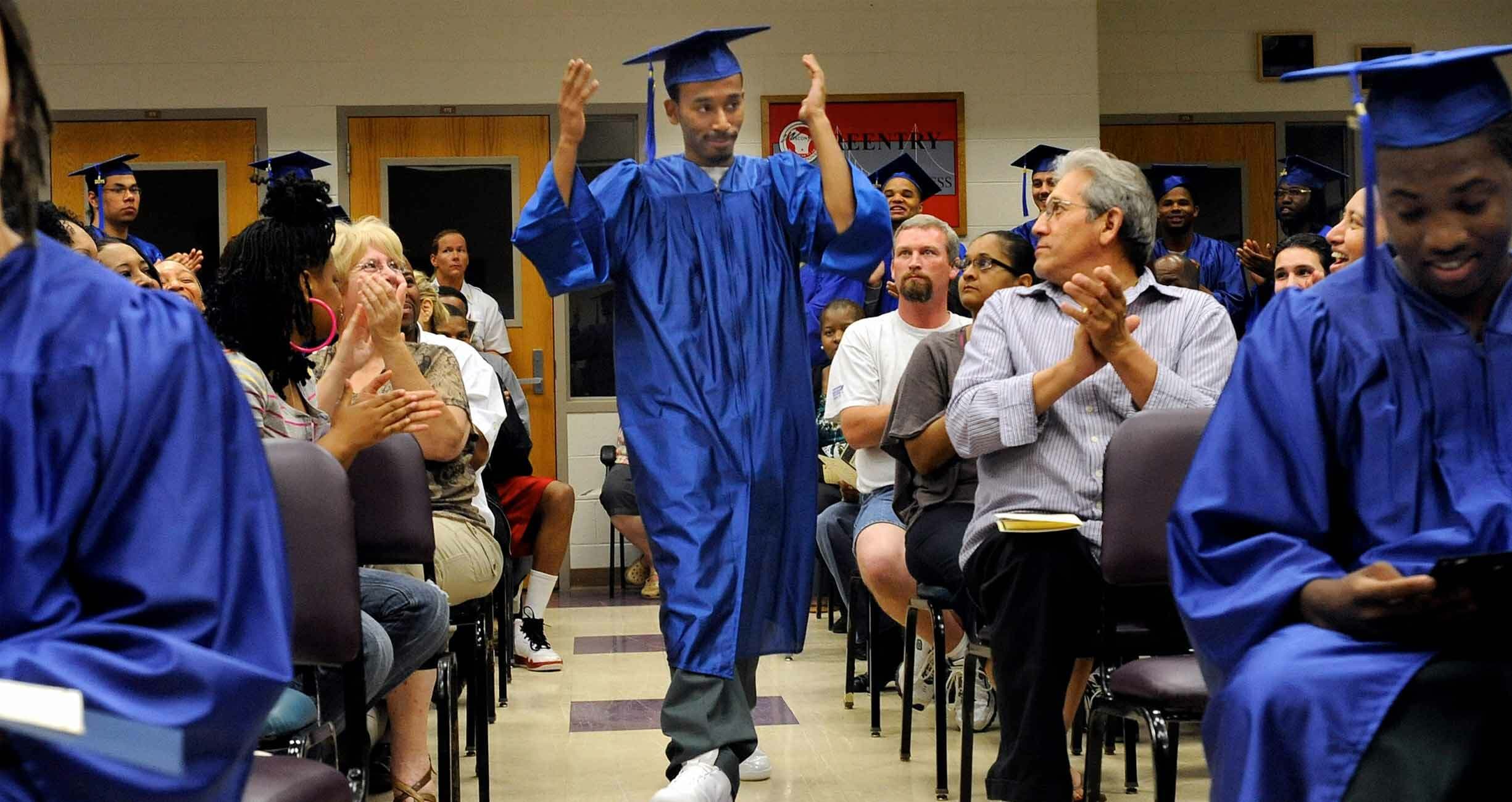Series: From the President
After 29 Years, Incarcerated Students Are Finally Going Back to School

In July, incarcerated people, regardless of sentence length or conviction type, will regain eligibility for Pell Grants, a crucial form of financial aid that helps 6 million people pay for college every year. People in prison have not been eligible for this federal, need-based aid for nearly three decades, ever since the sweeping and ill-sighted 1994 Crime Bill barred their access.
Without Pell Grants, most incarcerated people could not afford postsecondary education. Before the passage of the 1994 Crime Bill, there were more than 770 higher education programs nationwide. After, enrollment figures dropped, and college-in-prison programs shut down. By 1997, an estimated eight programs remained.
The ban was a devastating blow to incarcerated people, and one that has also impacted families, communities, and society at large. More than 95 percent of people in prison will return to their communities. A college education makes it more likely that they will be able to secure well-paying jobs and build stable livelihoods, and it reduces the odds that they will return to prison.
That benefits us all. Every dollar invested in postsecondary education in prison yields five dollars in taxpayer savings from reduced incarceration costs, and lower incarceration rates can cut the cost of state prison spending by more than $365 million every year.
The reinstatement of Pell Grants for incarcerated students this July is the culmination of nearly three decades of advocacy by formerly incarcerated leaders and numerous organizations. They include people like Vivian Nixon at the College & Community Fellowship, Syrita Steib at Operation Restoration, and Stanley Andrisse at Prison-to-Professionals.
New pathways
This moment is an opportunity to reflect on the work that brought us here, and the work that remains.
Vera began its efforts to expand postsecondary education in prison in 2012, when we launched the Unlocking Potential: Pathways from Prison to Postsecondary Education (Pathways) project. The program provided funding and guidance to colleges and state corrections departments offering postsecondary education at correctional facilities in three states: Michigan, New Jersey, and North Carolina.
On the heels of the 2008 recession, states—recognizing the mounting financial burden of mass incarceration—were increasingly interested in evidence-based policies that would reduce costs. Research has long demonstrated that postsecondary education reduces the likelihood that people will return to prison, and the Pathways project reinforced those findings. The program, which enabled students to pursue higher education both while incarcerated and after release, offered support for students and a laid foundation for future expansion.
Vera—along with other organizations and advocates, like Nixon—also helped develop a time-limited U.S. Department of Education demonstration program that enabled participating colleges to provide Pell Grants to incarcerated students. That program, the Second Chance Pell Experimental Sites Initiative (SCP), which launched in 2015, has been extended twice since then. It has significantly increased college enrollment and completion for incarcerated students every year since its inception. Vera provides support to the participating colleges and corrections departments. To date, more than 40,000 students in 48 states, plus Washington, DC, and Puerto Rico, have participated in the program.
“Prisons are not designed to be spaces for learning and community,” said Margaret diZerega, managing director of initiatives at Vera. “Programs like Pathways and Second Chance Pell have required college and corrections department partners to collaborate and innovate strategies for delivering college in prison that form the basis for our work in prisons today.”
Finally, what once seemed impossible started to feel achievable. In 2017, Vera launched a campaign urging Congress to reinstate Pell Grants for incarcerated people, which gained bipartisan support and spurred policy shifts in states including New Jersey, Michigan, Tennessee, and North Carolina. The campaign was successful due to the partnership and leadership by formerly incarcerated leaders, corrections departments, colleges, business voices, and many others. And in December 2020, in a massive victory, Congress voted to lift the ban on Pell Grants for incarcerated people entirely.
The next challenge
With Pell reinstatement, Vera estimates that at least 760,000 prospective students will be eligible to receive Pell Grants to fund their college education while in prison. But for incarcerated people to fully benefit from this landmark change, the federal government, states, and colleges and universities will need to move with far greater urgency and prioritize the expansion of postsecondary education programming in prison.
The Federal Bureau of Prisons, the largest prison system in the country, needs to expand access to Pell Grants and college-in-prison. It currently offers Pell Grants to students at only 12 of its 122 facilities, and only 14 colleges can offer courses to these students.
State corrections departments need to issue applications to invite colleges to teach in prison under the new regulations. As of writing, only 10 have done so.
And colleges and universities need to develop college-in-prison programs and incorporate student services, such as academic advising and career counseling. As the number of people enrolling in college-in-prison programs grows and schools and corrections departments look to expand their offerings, the focus also shifts to ensuring equitable access and high-quality programs.
This is a proud moment, but there is still much to be done to ensure that students in prison have access to high-quality postsecondary education, the support they need to complete their programs, and the chance to thrive when they come home.
